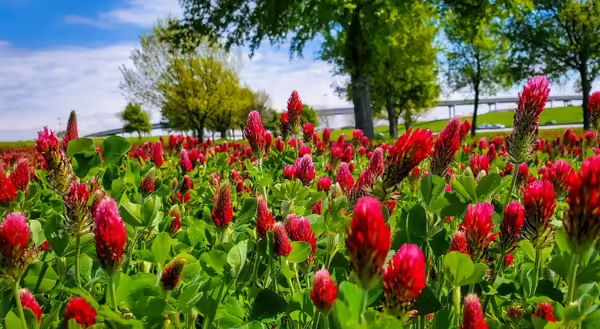
Healthy soil is essential for healthy plants. Using cover crops in the home garden is one way to promote soil health.
Cover crops are non-harvested crops that add organic matter to the soil, transfer nitrogen by creating nitrogen compounds usable by plants, and break up heavy clay or compacted soil.
Cover crops are planted either before you plant your garden or after harvest. They can also be planted in areas that are unused for the season.
Using cover crops in the home garden has many benefits. Improving soil structure, drawing nutrients up from deep in the soil, and increasing soil fertility are just a few ways cover crops to improve soil health. Suppression of weeds, habitat for beneficial insects, increased biodiversity are other ways cover crops work for the garden's good.
There are two types of cover crops to consider, warm-season and cool-season. Warm-season cover crops are planted in spring or summer before your garden plants or in a fallow area. Buckwheat, cowpeas, and crimson clover are warm-season cover crops used in the home garden.
Cool-season cover crops are planted late summer or early fall after the harvest of your vegetables.
Keep in mind that these cool-season cover crops need to germinate and grow before winter temperatures. Oats, winter wheat, winter rye, and crimson clover can be used as cool-season cover crops.
Crimson clover and cowpeas are legumes that can take nitrogen from the air and convert it to a form usable by plants. Notice that crimson clover can be used as either a warm-season or cool-season cover crop.
When planting a cover crop, there is no need to cover the seeds. Allow the plants to grow until the flowering stage. Once flowering begins, either mow or cut down as close to the ground as possible to prevent seed formation. If the crop is cut down too early, it may regrow. If it is cut down too late, it may reseed.
After cutting down the cover crop, you can leave the cut portion as a mulch on top of the soil or till it into the ground. Leaving the plant material as a mulch can help suppress weed pressure. Tilling can help incorporate the organic matter into the soil, but it also disrupts the delicate soil ecosystem. Each garden is unique, so you must decide what is suitable for each situation.
Winter hardy cover crops or crops not killed by the mowing could be tilled into the soil. A cover crop that is killed by winter temperatures would not require tilling the debris into the soil.
It is important to follow the mow, wait, plant rule when using cover crops. After mowing the cover crop, leave the plant debris to sit for two to four weeks before planting your vegetables. The residue needs time to break down and the flush of microbial activity to slow before new plants start growing.
Cover crops required close observation and careful management. Using them can benefit your home garden by increasing biodiversity and soil health.
MEET THE AUTHOR
Nicole Flowers-Kimmerle is a Agriculture and Natural Resources (Horticulture) Educator for Fulton, Mason, Peoria and Tazewell counties. She completed a bachelors of science degree in crop science at the University of Illinois, and a master’s of science degree in agronomy with an emphasis in weed science at the University of Wisconsin-Madison. She has also worked at Montana State University as a research associate where she worked on weed control in sugar beets and barley. She taught high school chemistry and other science classes where she was able to teach students in both the school garden and greenhouse. She works with both the Extension Master Gardeners and Extension Master Naturalists.
ABOUT THE BLOG
ILRiverHort is a blog that helps people connect to nature and grow.